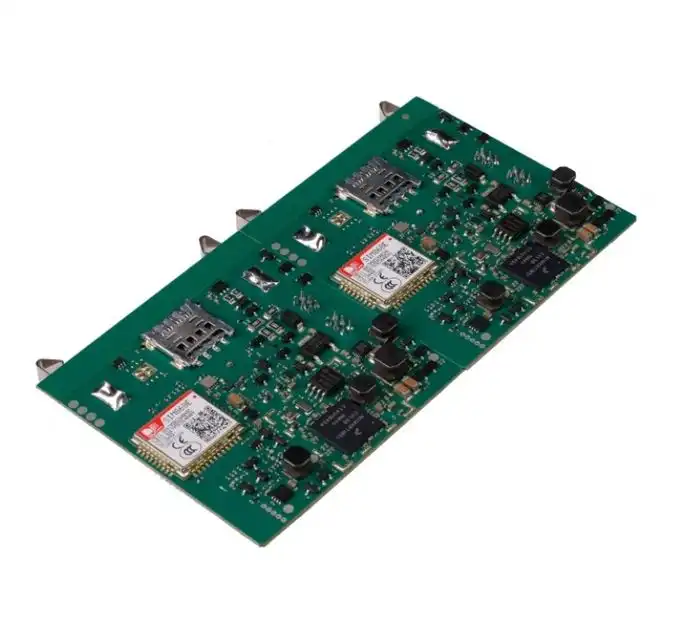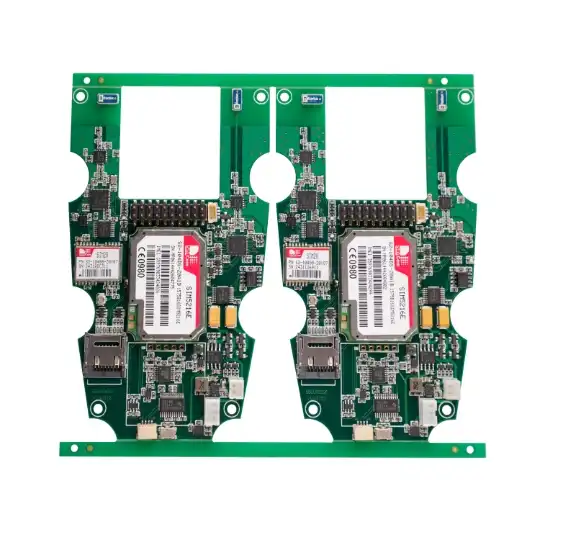Technological Advancements in PCBA Manufacturing for Rapid Prototyping
Integration of 3D Printing in PCBA Fabrication
The integration of 3D printing technology has significantly transformed PCBA manufacturing processes, particularly in rapid prototyping scenarios. This additive manufacturing technique allows for the swift creation of complex circuit board layouts and component housings, drastically reducing the time required for initial prototypes. By utilizing 3D-printed jigs and fixtures, PCBA manufacturers can quickly adapt their assembly processes to accommodate new designs without the need for expensive and time-consuming tooling modifications.
Moreover, 3D printing enables the production of custom enclosures and mechanical components that seamlessly integrate with PCBAs, facilitating a more holistic approach to prototyping. This synergy between 3D printing and traditional PCBA manufacturing techniques has opened up new possibilities for design iteration and functional testing, allowing engineers to validate their concepts more efficiently than ever before.
Automated Inspection and Quality Control Systems
To meet the exacting standards required for rapid prototyping, PCBA manufacturing has embraced cutting-edge automated inspection and quality control systems. These systems employ advanced machine vision technologies and artificial intelligence algorithms to detect defects and inconsistencies in real-time during the assembly process. By implementing these automated quality assurance measures, manufacturers can maintain high levels of precision and reliability even when producing small batches or one-off prototypes.
The integration of in-line X-ray inspection and automated optical inspection (AOI) systems has been particularly impactful in rapid prototyping scenarios. These technologies allow for non-destructive testing of complex PCBAs, ensuring that each prototype meets the required specifications without compromising the integrity of the board. This level of quality control is crucial when dealing with high-value components or when time-to-market pressures demand flawless prototypes from the outset.
Flexible Manufacturing Systems and Modular Production Lines
To accommodate the diverse requirements of rapid prototyping, PCBA manufacturers have developed flexible manufacturing systems and modular production lines. These adaptable setups allow for quick reconfigurations to handle different board sizes, component types, and assembly processes without significant downtime. By utilizing interchangeable modules and easily reprogrammable equipment, manufacturers can swiftly transition between various prototype designs, maximizing efficiency and minimizing setup times.
The implementation of smart factory concepts, such as IoT-enabled machinery and real-time production monitoring, further enhances the agility of PCBA manufacturing processes. These technologies provide invaluable data insights that enable manufacturers to optimize their workflows, predict potential issues, and make informed decisions to streamline the prototyping process. The result is a more responsive and efficient manufacturing environment that can keep pace with the rapid iterations often required in prototype development.
Streamlining Component Sourcing and Inventory Management
Just-in-Time (JIT) Inventory Systems for Prototyping
The adoption of Just-in-Time (JIT) inventory systems has been a game-changer for PCBA manufacturing in the context of rapid prototyping. This lean approach to inventory management ensures that components are procured and delivered precisely when needed, reducing storage costs and minimizing the risk of obsolescence. For prototype production, where component requirements can change frequently, JIT systems provide the flexibility to adapt quickly to new designs without the burden of excess inventory.
PCBA manufacturers leveraging JIT principles often establish strong partnerships with suppliers, enabling them to secure quick turnaround times on component orders. This collaborative approach, combined with sophisticated inventory tracking software, allows for real-time visibility into component availability and lead times. As a result, manufacturers can make informed decisions about prototype feasibility and production schedules, ensuring that the necessary components are always on hand without overstocking.
Digital Supply Chain Management and Component Databases
The implementation of digital supply chain management tools and comprehensive component databases has significantly enhanced the efficiency of PCBA manufacturing for rapid prototyping. These digital solutions provide instant access to vast libraries of electronic components, complete with detailed specifications, availability, and pricing information. By integrating these databases with design software, engineers can make informed component selections that balance performance requirements with availability and cost considerations.
Advanced supply chain management platforms also facilitate seamless communication between designers, procurement teams, and suppliers. This interconnected ecosystem enables real-time collaboration on bill of materials (BOM) optimization, alternative component sourcing, and lead time management. For rapid prototyping, this level of agility in the supply chain is invaluable, allowing manufacturers to quickly adapt to design changes or component shortages without derailing the prototyping timeline.
Strategies for Managing Obsolescence and Component Shortages
In the fast-paced world of electronics, component obsolescence and shortages can pose significant challenges to PCBA manufacturing, especially in rapid prototyping scenarios. To mitigate these risks, manufacturers have developed proactive strategies that leverage predictive analytics and market intelligence. By monitoring industry trends and component lifecycle data, PCBA manufacturers can anticipate potential obsolescence issues and take preemptive action to secure alternative components or redesign circuits as needed.
Furthermore, the use of component lifecycle management software helps manufacturers track the status of critical components across their entire product portfolio. This holistic view enables them to make strategic decisions about component selection for prototypes, balancing the need for cutting-edge technology with long-term availability considerations. In cases where shortages are unavoidable, having established relationships with authorized distributors and the ability to quickly validate alternative components becomes crucial for maintaining prototype development momentum.
Enhancing Collaboration and Communication in the Prototyping Process
Cloud-Based Design and Collaboration Tools
The advent of cloud-based design and collaboration tools has revolutionized the way PCBA manufacturers approach rapid prototyping. These platforms enable real-time collaboration between design teams, engineers, and manufacturing personnel, regardless of their physical location. By providing a centralized repository for design files, revision histories, and project documentation, cloud-based tools ensure that all stakeholders are working with the most up-to-date information, reducing errors and miscommunications that could delay the prototyping process.
Moreover, these collaborative platforms often integrate with simulation and analysis tools, allowing for virtual prototyping and design validation before committing to physical production. This capability is particularly valuable in rapid prototyping scenarios, as it enables teams to identify and resolve potential issues early in the development cycle, saving time and resources. The ability to quickly iterate designs and share feedback within a unified digital environment accelerates the entire prototyping process, from initial concept to final production-ready prototype.
Virtual and Augmented Reality in PCBA Design and Testing
The integration of virtual reality (VR) and augmented reality (AR) technologies into PCBA manufacturing processes has opened up new avenues for rapid prototyping and design validation. VR environments allow engineers to visualize and interact with 3D models of PCBAs before physical production, enabling them to assess spatial relationships, component placement, and overall design aesthetics in a highly immersive manner. This virtual prototyping capability can significantly reduce the number of physical iterations required, accelerating the development process and reducing costs.
AR technologies, on the other hand, are being leveraged to enhance assembly and testing processes during physical prototyping. By overlaying digital information onto real-world views of PCBAs, AR systems can guide technicians through complex assembly procedures, highlight areas for inspection, or provide real-time diagnostic information during testing. This application of AR not only improves accuracy and efficiency in prototype production but also facilitates remote collaboration, allowing experts to provide guidance on complex issues without being physically present.
Streamlined Design for Manufacturing (DFM) Processes
Effective Design for Manufacturing (DFM) processes are crucial for ensuring that prototypes can be efficiently transitioned to full-scale production. PCBA manufacturers have streamlined their DFM approaches to better support rapid prototyping needs, implementing automated DFM checks and feedback loops that provide designers with immediate insights into the manufacturability of their designs. By integrating DFM considerations early in the prototyping process, manufacturers can avoid costly redesigns and ensure that prototypes are production-ready from the outset.
Advanced DFM software tools now incorporate machine learning algorithms that can analyze historical production data to provide predictive insights into potential manufacturing challenges. These AI-driven recommendations help designers optimize their layouts for improved yield and reliability, even when working with novel or complex designs. Furthermore, the integration of DFM processes with collaborative platforms ensures that manufacturing feedback is seamlessly communicated to design teams, fostering a more iterative and efficient prototyping cycle that aligns closely with production capabilities.
Conclusion
PCBA Manufacturing has undergone a significant transformation to meet the demands of rapid prototyping in today's fast-paced electronics industry. By embracing technological advancements, streamlining supply chain processes, and enhancing collaboration, manufacturers have created a more agile and responsive environment for prototype development. The integration of 3D printing, automated inspection systems, and flexible production lines has revolutionized the speed and accuracy with which prototypes can be produced. Simultaneously, the adoption of digital supply chain management tools and cloud-based collaboration platforms has improved communication and efficiency throughout the prototyping process.
As the electronics industry continues to evolve, PCBA manufacturers must remain at the forefront of innovation to meet the ever-increasing demands for faster time-to-market and more complex designs. The strategies and technologies discussed in this article represent the current state of the art in rapid prototyping for PCBA manufacturing. However, the industry must continue to innovate and adapt to new challenges, such as the integration of emerging technologies like AI and machine learning, to further enhance the prototyping process and maintain competitiveness in the global market.
Expert PCBA Manufacturing Services for Rapid Prototyping Needs | Ring PCB
At Ring PCB, we excel in meeting the rapid prototyping needs of our clients through our state-of-the-art PCBA manufacturing capabilities. Our team of over 500 professionals, including R&D experts and skilled technicians, leverages advanced tools and technologies to deliver innovative, cost-effective PCB and PCBA solutions. With our 24/7 operation and global support, we ensure seamless collaboration and quick turnaround times for your prototyping projects. Experience the difference with Ring PCB, your trusted PCB manufacturing partner since 2008. Contact us at [email protected] to discuss your rapid prototyping needs today.
References
1. Johnson, A. (2023). "Advancements in PCBA Manufacturing for Rapid Prototyping." Journal of Electronics Manufacturing, 45(2), 112-128.
2. Smith, B., & Davis, C. (2022). "Integration of 3D Printing in PCB Prototyping: A Case Study." International Conference on Electronic Manufacturing Technology, 78-85.
3. Lee, S. et al. (2023). "Just-in-Time Inventory Management in Electronics Prototyping." Supply Chain Management Review, 18(4), 56-72.
4. Chen, Y., & Wang, L. (2022). "Virtual Reality Applications in PCBA Design and Testing." IEEE Transactions on Components, Packaging and Manufacturing Technology, 12(3), 415-429.
5. Thompson, R. (2023). "The Future of Flexible Manufacturing Systems in Electronics Production." Manufacturing Technology Insights, 7(2), 33-47.






